Break Game
Break Game is an energizing activity designed to keep your meeting participants refreshed and engaged throughout the day. The game features quick rounds during breaks, where small teams collaborate to solve a series of tasks.
The content can be customized with your own challenges or incorporate workplace wellness questions created by the UKK Institute.
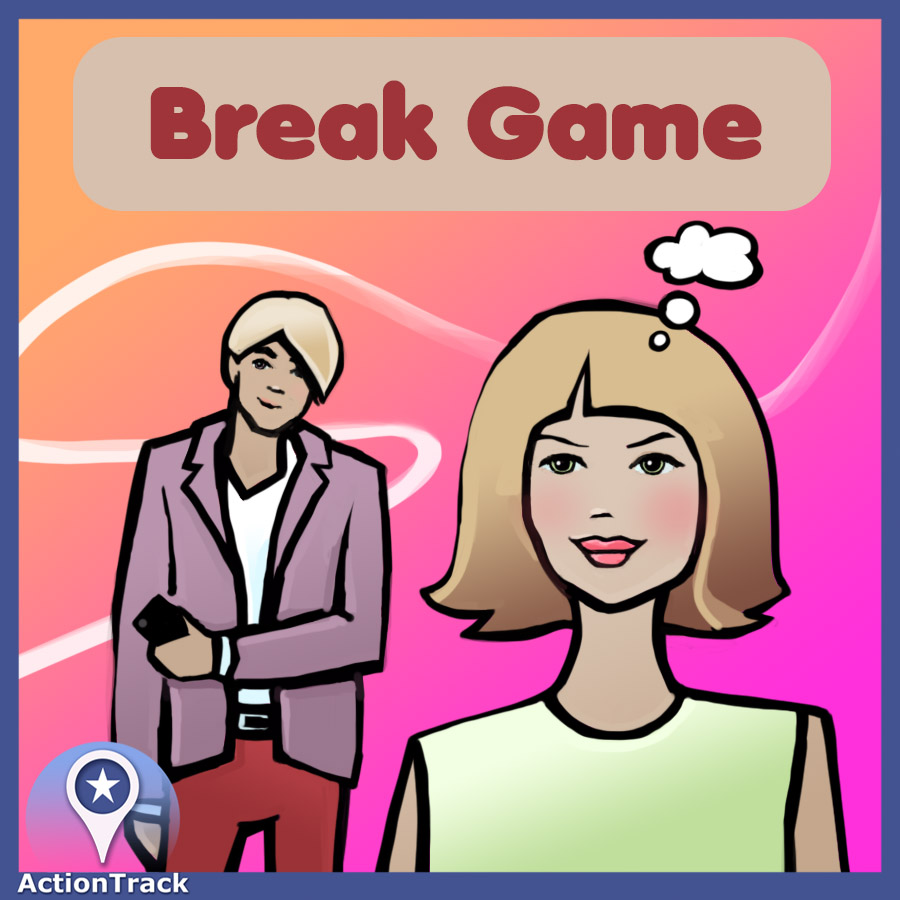
Purpose of the game
The break game is well-suited for quickly and effectively keeping group members engaged while also helping them learn and internalize a specific topic.
The game temporarily shifts participants’ focus away from the meeting, allowing them to solve tasks in small teams and learn something new. This brief change of pace from the usual meeting flow helps improve concentration and cognitive function for the remainder of the meeting.
At the same time, the game introduces a small element of competition, which helps raise energy levels.
The game’s customizable content allows you to set specific questions and topics of interest.
You can introduce your own customized questions for your meeting or event. Team responses and statistics are immediately visible, making them available for use during the meeting itself.
Additionally, the game offers the option to use tasks created by the UKK Institute on workplace well-being. The feedback sections of these tasks provide teams with in-depth information about each topic covered in the questions.
Game duration and adaptation to events of different sizes
The recommended effective duration of the game is 30-60 minutes.
The game can be organized as a single session or multiple sessions.
Alongside breaks, the game can be experienced at the beginning of the day, for example, as a 30-minute session. During this time, you can ask participants for their opinions on specific topics and review the answers and statistics throughout the meeting.
The game is perfectly suited for events of all sizes.
It works just as well for small groups as it does for events with thousands of participants.
Teams can continue playing whenever it suits them. Playing doesn’t need to happen simultaneously, and it can be done intermittently throughout the day. This makes it easy to manage even large numbers of participants.
Gameplay overview
1. Starting the game
Starting the game only takes a moment.
At the beginning of the game, participants are divided into teams of 3-5 people. The team division can also be planned in advance.
Each team needs one mobile device to join the game by entering the team name.
2. Playing
When a team has the opportunity to continue the game, they simply need to activate the next task. Tasks are typically assigned to teams in a random order, so listening to other teams doesn’t necessarily help.
Once a team has completed a task, they can pause the game and return to it later, or activate the next task.
3. Game results
The representative of the client group has access to a real-time results link, which shows the points earned by the teams, the answers given by the teams to the game’s questions, as well as the game statistics. The results link also allows viewing and downloading any photos or videos captured by the teams. The results link remains accessible even after the event day.
A few images from the game
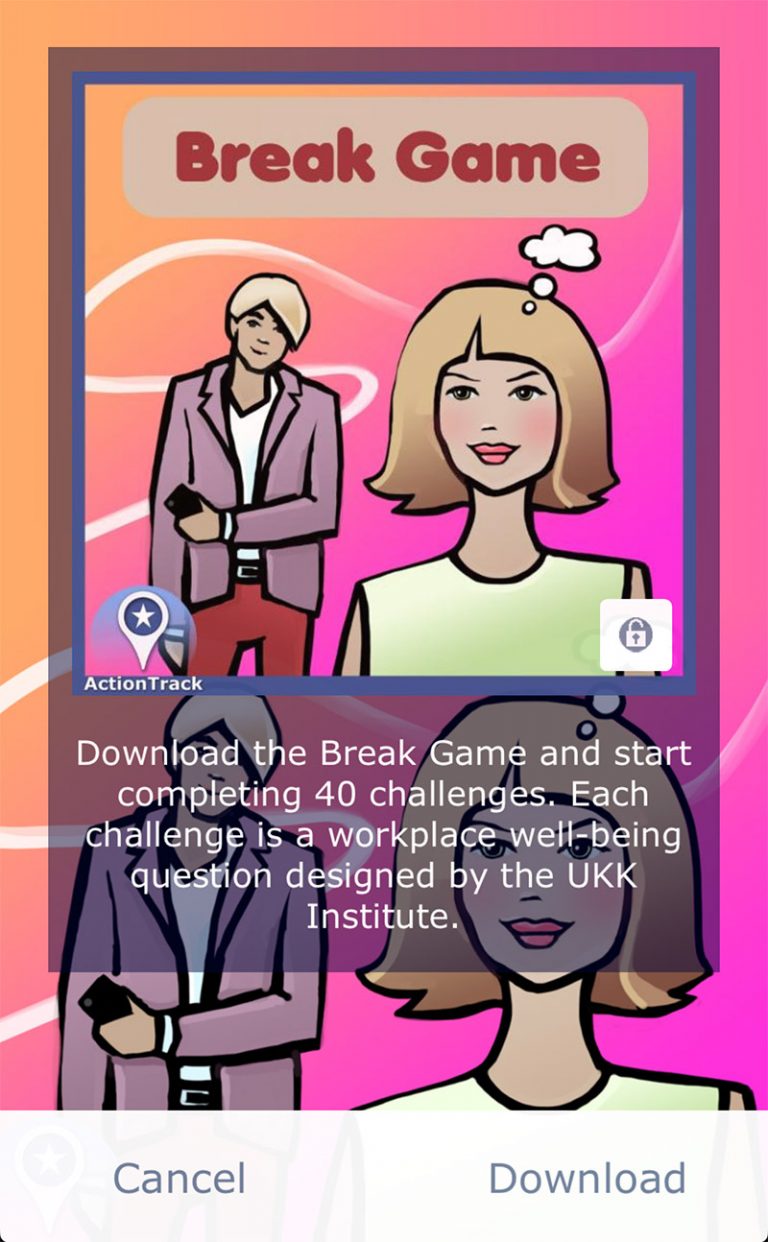
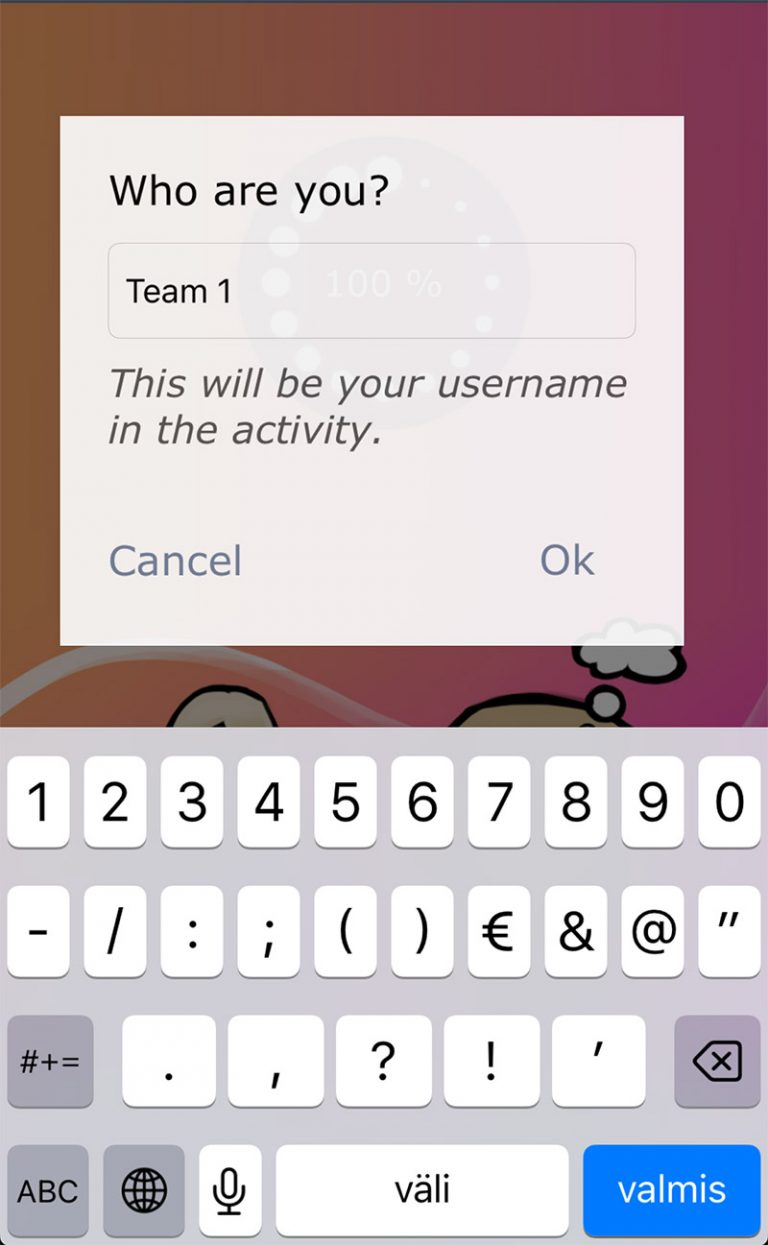
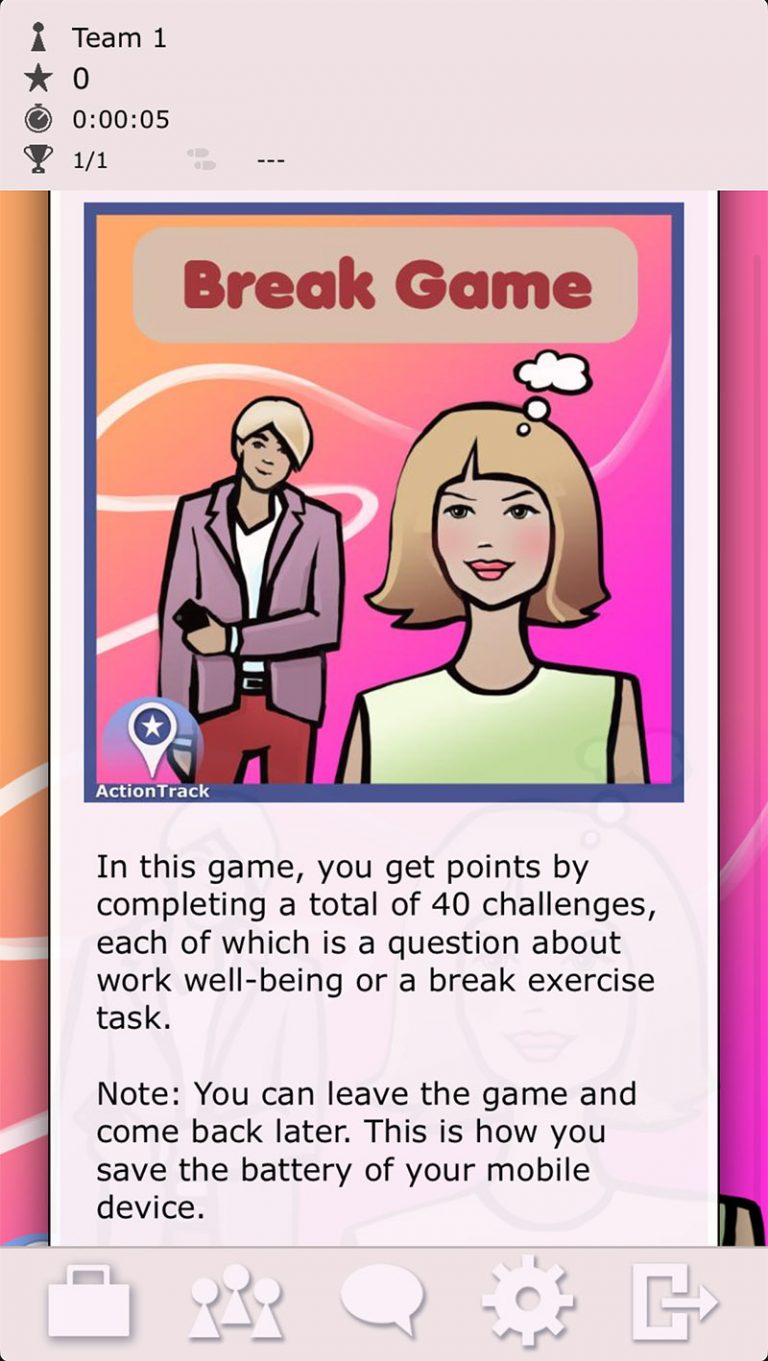
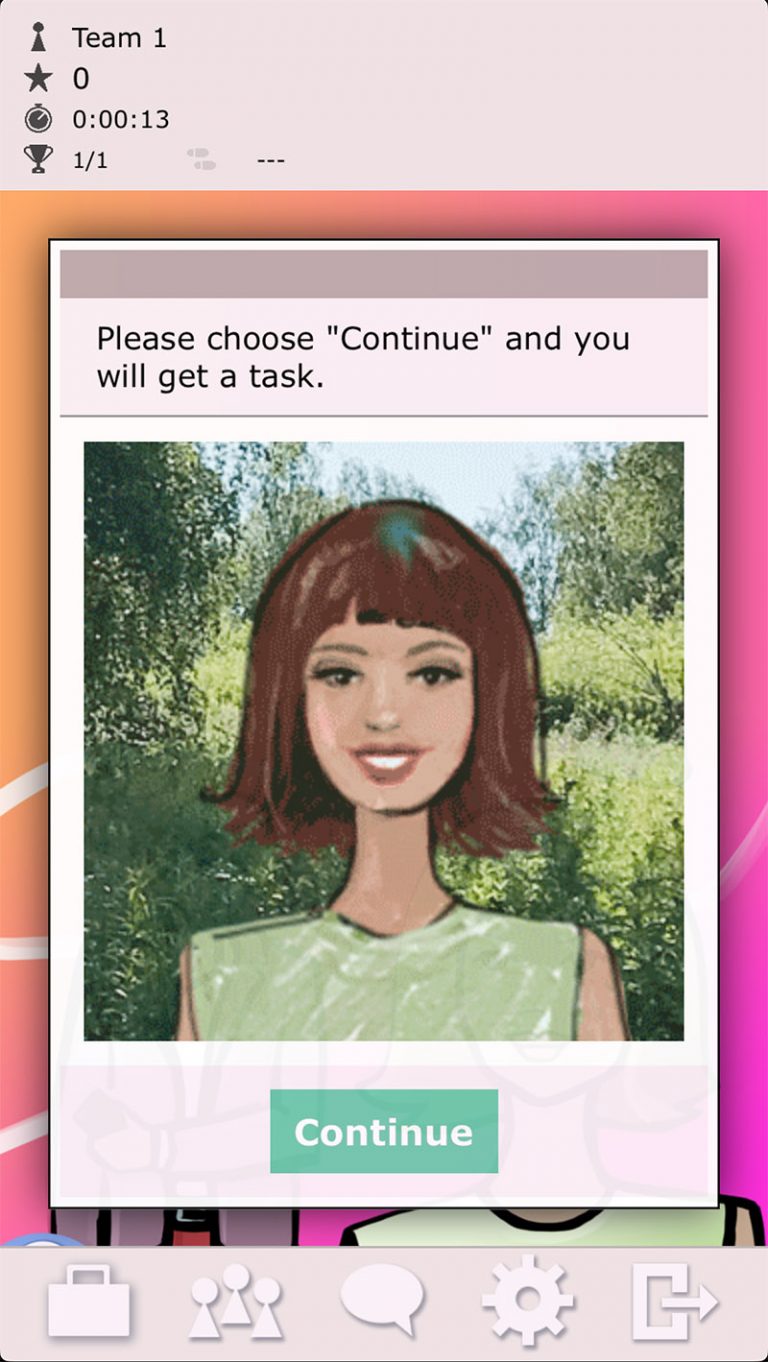
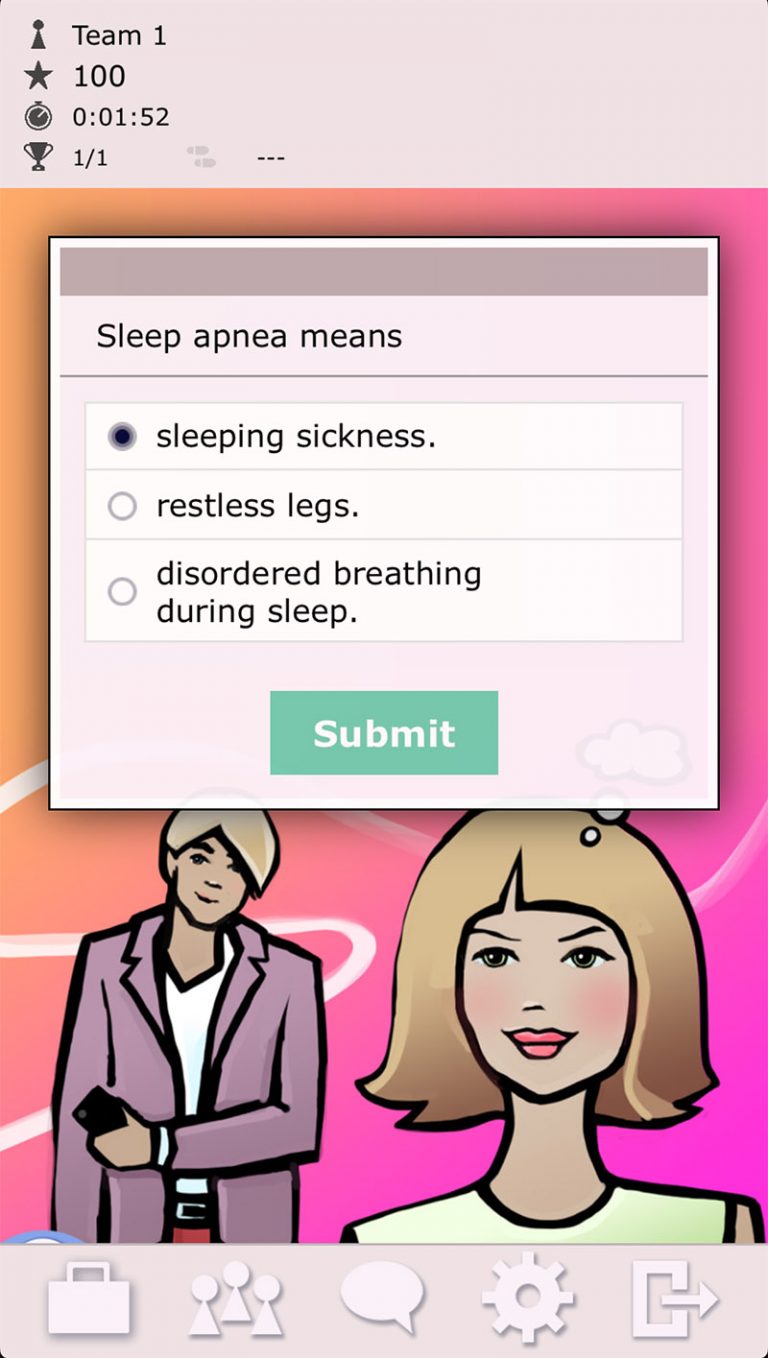
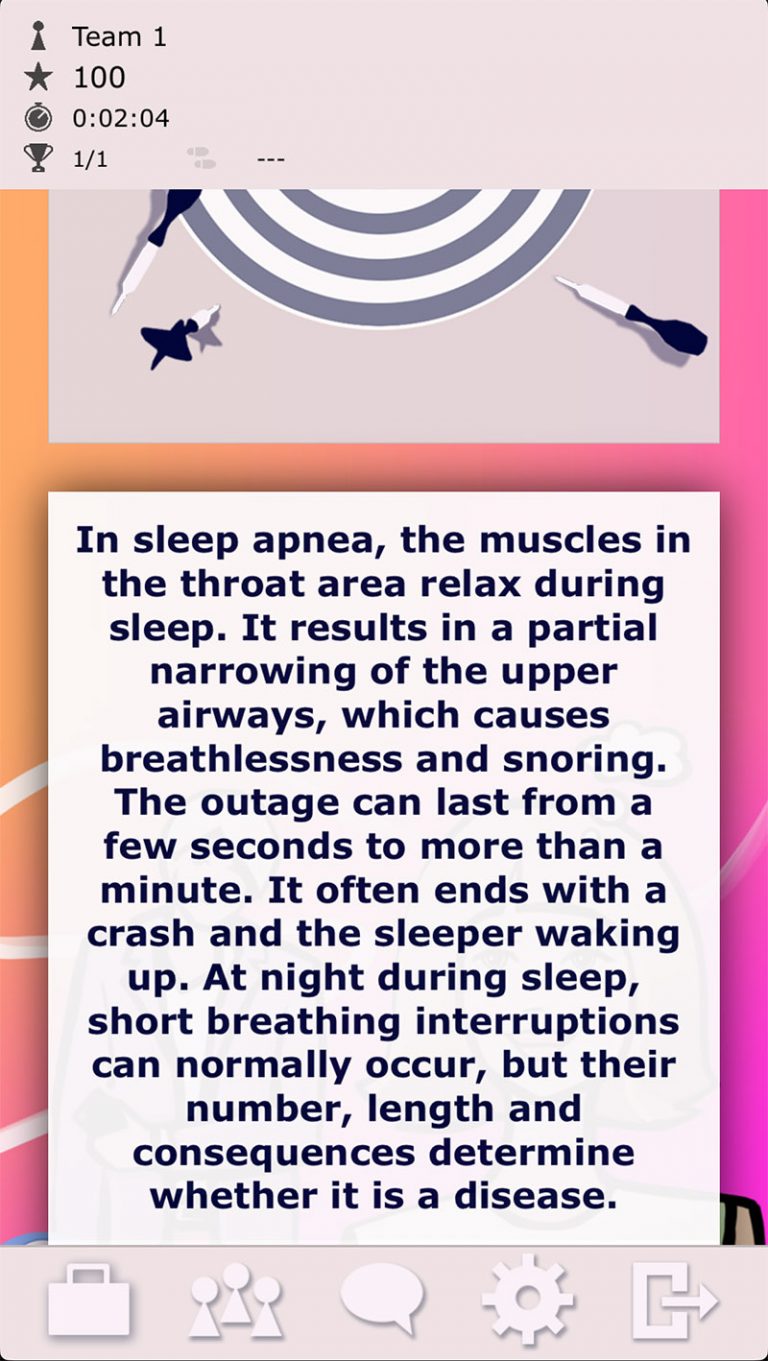
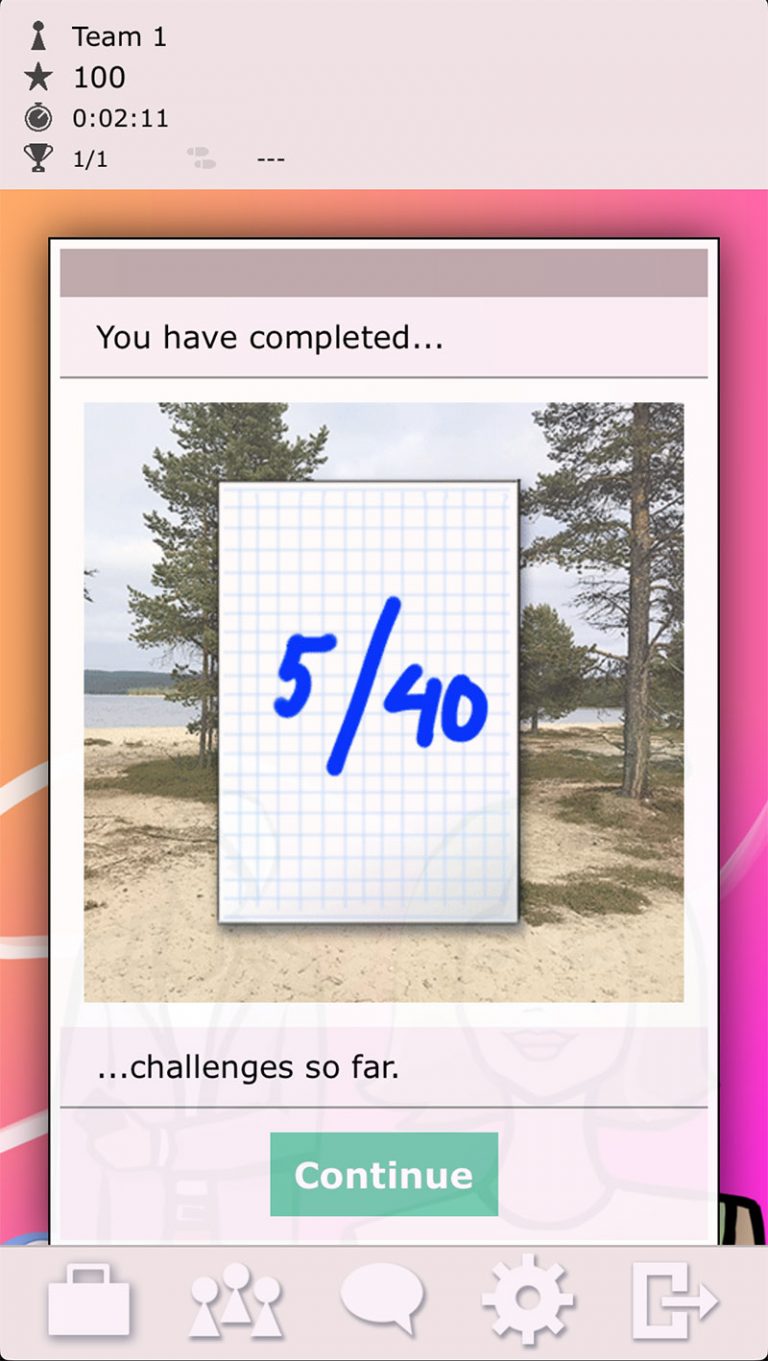
Game customization
1. Number of tasks
The game can include any number of the customer’s own tasks and questions.
Additionally, the game can incorporate any number of workplace well-being tasks from the UKK Institute.
The typical maximum number of tasks is 40.
1. Tasks and their order
The game tasks can be given in a completely random order.
Alternatively, the customer’s own tasks can be presented first, or with a focus on the beginning, ensuring that teams complete all of them.
Instructions for players
Here’s how you play the Break Game:
1. Form teams of 3-5 people, with each team needing just one shared mobile device. Make sure the device has a full battery.
2. Download the free ActionTrack app from Google Play or the App Store.
3. Open the app and download the game by entering the join code, naming your team, and joining the game.
4. The game tasks are randomly assigned to the teams. There are a total of 40 tasks in the game (your game might be shorter).
5. Teams can complete tasks throughout the day, for example, during breaks. Players can leave the game temporarily and rejoin later.
6. Each task in the game is a question related to workplace well-being. Teams will also receive feedback on their answers.
7. The team with the most points wins.